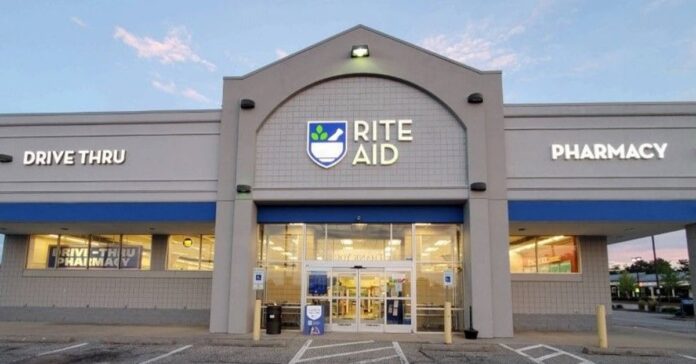The retail pharmacy world was rocked this week when Rite Aid Pharmacy, a once-dominant player in the U.S. drugstore market, announced it is filing for Chapter 11 bankruptcy protection for the second time in less than two years. On May 5, 2025, the Philadelphia-based chain confirmed its financial struggles, revealing plans to sell substantially all its assets while keeping its 1,245 stores open during the process. This bombshell follows a turbulent period for the company, which emerged from its first bankruptcy in September 2024, only to face dwindling cash reserves and mounting competition. For customers and employees, the news raises questions about the future of their local Rite Aid. Let’s dive into what’s happening, why it matters, and what could come next for this iconic brand.
Rite Aid Pharmacy’s Financial Freefall
Rite Aid’s latest bankruptcy filing is a stark reminder of the brutal challenges facing traditional retail pharmacies. The company, which once operated over 5,000 stores nationwide, has been battered by a perfect storm of debt, legal battles, and shifting consumer habits. Its first Chapter 11 filing in October 2023 slashed $2 billion in debt and closed over 800 stores, but it wasn’t enough. By early 2025, Rite Aid was running low on cash, struggling to stock shelves, and losing customers to rivals like CVS and Walgreens. Retail expert Neil Saunders noted that empty shelves create a poor shopping experience, driving shoppers away for good.
The company’s CEO, Matt Schroeder, acknowledged the dire situation in a letter to employees, stating that a “significant vendor” tightened payment terms, accelerating a company loan. To stay afloat, Rite Aid secured nearly $2 billion in new financing to support operations during bankruptcy. Meanwhile, the chain is actively seeking buyers, with Schroeder expressing optimism about “meaningful interest” from potential national and regional acquirers. But with only 1,245 stores left—down from 2,000 in 2023—the stakes are high.
Read Also-Benson Boone Tour Ignites 2025 with American Heart Vibe
Why Rite Aid Pharmacy Is Struggling
Several factors have pushed Rite Aid to the brink:
- Debt Overload: Even after cutting $2 billion in debt, Rite Aid’s financial burdens remain heavy, with ongoing losses reported for years.
- Store Closures: Since 2023, Rite Aid has shuttered nearly 40% of its stores, including all Michigan locations and 175 in New York, shrinking its footprint and revenue.
- Competition: CVS and Walgreens dominate the market, while Walmart and Amazon offer cheaper alternatives and faster delivery.
- Legal Woes: Rite Aid faces opioid-related lawsuits and a $6.8 million data breach settlement, adding to its financial strain.
- Retail Apocalypse: Rising theft and tight margins have hit brick-and-mortar stores hard, with 7,300 retail closures in 2024 alone.
These challenges aren’t unique to Rite Aid. Walgreens, facing its own losses, agreed to a $10 billion buyout by Sycamore Partners in 2025, while CVS plans to close 270 stores this year. Yet Rite Aid’s smaller size makes it harder to compete.
Rite Aid Pharmacy’s Plan to Survive
Despite the grim outlook, Rite Aid is fighting to stay relevant. The company vows to keep stores open during bankruptcy, ensuring uninterrupted pharmacy services. Customer prescriptions will be transferred to other pharmacies if stores close, a process Rite Aid is working to streamline. The chain is also exploring a sale, hoping a buyer will inject fresh capital or merge operations with a stronger player. Past attempts at mergers—with Walgreens in 2015 and Albertsons in 2018—fell through, but Schroeder’s team is banking on new interest.
For employees, the news is bittersweet. Rite Aid aims to preserve jobs, but a second bankruptcy could lead to more layoffs or store closures. In Michigan, where all stores closed in 2024, former employees are still reeling. Customers, too, face uncertainty. Many rely on Rite Aid for affordable prescriptions and community pharmacy services, and further closures could leave gaps in access, especially in rural areas.
What’s Next for Rite Aid and Its Customers?
The road ahead for Rite Aid Pharmacy is fraught with challenges, but it’s not the end yet. If a sale materializes, the chain could find new life under different ownership. If not, experts warn that Rite Aid risks liquidating more stores, potentially vanishing from key markets like Ohio and Oregon, where it has already scaled back. For now, the company’s focus is on maintaining trust. “We’re committed to our customers and associates,” Schroeder said, emphasizing uninterrupted service.
For shoppers, it’s a good time to check on prescription transfers and explore alternatives like CVS, Walgreens, or online pharmacies such as Amazon Pharmacy or Mark Cuban’s CostPlus Drugs. Keep an eye on local store updates, as closures could happen quickly. Rite Aid’s story is a cautionary tale of an industry in flux, where even giants struggle to adapt. Yet there’s hope that this scrappy chain, founded in 1962 by Alex Grass, can pull through.
As Rite Aid navigates this crisis, its fate will ripple across communities, employees, and competitors. Will it rise again or fade into retail history? Only time will tell, but one thing’s clear: the fight for survival is on, and Rite Aid isn’t giving up without a battle. Stay tuned for updates, and share your thoughts—how has Rite Aid’s journey affected you?
